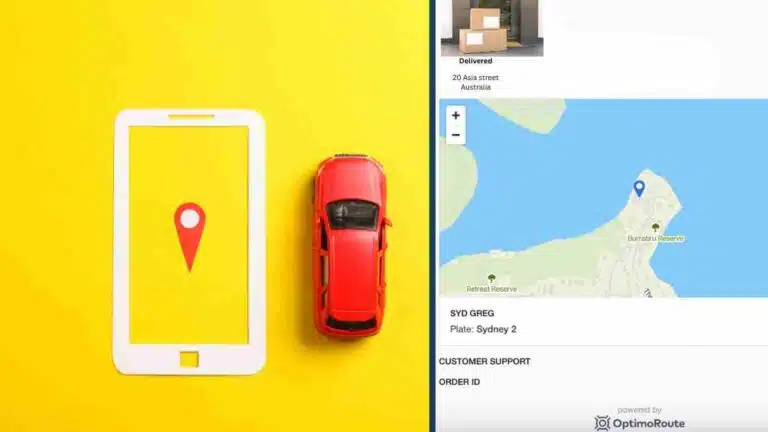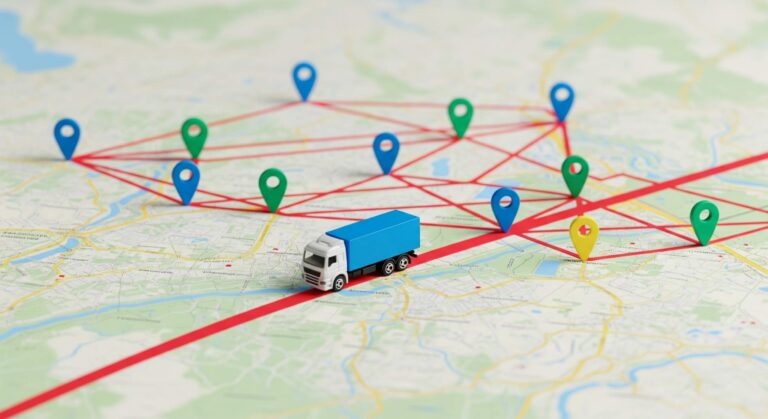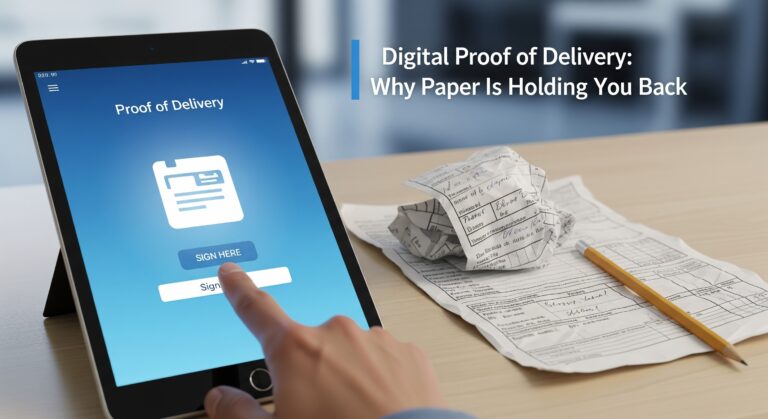GPS fleet tracking software’s top achievement is improved productivity. Businesses are noticing an increased productivity (55%) since using the technology.
Choosing the right GPS fleet tracking software with the right features is crucial to your company’s success. Think about the costs you can save on fuel consumption, accidents, and labor.
According to Verizon Connect’s Fleet Technology Trends Report, companies have saved, on average, 10% on fuel consumption and labor costs each. While 15% savings were made on accident costs due to choosing the best GPS fleet tracking solution.
Route efficiency and driver safety contribute to making sure fleets are operating at optimal capacity.
Let’s look at the key features to consider in GPS fleet tracking systems.
1. Real-time GPS fleet tracking
You have a VIP parcel delivery scheduled and the customer calls to check how far the delivery is. You don’t want to disappoint the important customer. So you call the driver, but there is no answer.
With modern technology, fleet managers can use GPS tracking software to know exactly where the live vehicle location of each driver and/or vehicle is.
With geofencing, it’s easier to set restrictions to make sure that drivers stay within certain areas.
Having real-time tracking on the vehicle is one of the crucial features that can save time, money, and your nerves.
Real time tracking helps with live vehicle location monitoring
Fleet managers can easily monitor the fleet management platform where each vehicle is and instantly facilitate a dispatch or adjust the current stop. This helps to keep operational oversight.
Geofencing capabilities for fleet tracking
Geofencing sets up virtual boundaries, triggering alerts to fleet managers when vehicles enter a certain restricted area.
You’ll immediately know if drivers are diverting from the route given and are making their own decisions without the company’s knowledge.
2. Route optimization is important for accurate GPS tracking
With more accurate information from GPS tracking devices, you want to send your drivers on the most efficient routes to make the travel time short and the delivery on time.
Dynamic route planning with a GPS tracker
Imagine saving up to 20% in mileage.
That’s what can happen by simply using route optimization, says Optimouroute. By tracking the routes and making sure drivers follow the most effective path planned for each stop, efficiency levels increase.
Fleet managers can easily respond to traffic and weather conditions, knowing exactly in which area drivers are, and quickly divert them.
Predictive traffic analysis improves fleet safety
GPS fleet tracking uses route optimization software that predicts traffic analysis. Using historic real-time data can help dispatchers avoid making the same mistake tomorrow.
Making productive adjustments can spare fuel and labor costs.
3. GPS fleet tracking software monitors driver behavior
Imagine reviewing and tracking data and noticing that one of your drivers is repeatedly speeding in the same area at the same time of the day. He takes shape turns, slamming on the brakes, and accelerates aggressively at every stop.
Each data point shows a risk not only for the fleet vehicles but also how to improve driver safety. Upon deeper investigation, you realize the driver idle at the same traffic light for a good 15 minutes each morning.

Speed and idling increase fuel costs
No one wants to suspect their drivers of abusing the system.
But without these accurate GPS fleet tracking capabilities, you would never have known that the driver in this incident picked up a friend each morning using your company resources.
Addressing issues of speed idling time can reduce vehicle maintenance costs and wear and tear on your fleet.
Harsh braking and acceleration alerts
How do you identify risky driving habits? You can only do this with fleet tracking software, alerting fleet managers when a driver is braking hard and accelerating harshly.
4. Ensure GPS tracker software can scale and customize
Systems offering modular features allow businesses to customize solutions to their specific needs, ensuring scalability as operations grow.
You don’t want to be stuck with outdated GPS tracker software that cannot handle the increasing number of fleets and drivers as your service expands.
It’s wise to invest in GPS fleet tracking that has strict access controls. You are dealing with sensitive information, and if it’s accessible to anyone (not only authorized personnel), it can create security problems.
5. Customer support and training for GPS fleet tracking software
Implementing GPS fleet tracking requires training and technical support. Most of these companies offering GPS tracking software are international businesses.
To make sure you get the best out of the technical support team, make sure it has 24/7 access to its specialists.
If any issues arise, you want them fixed immediately and not impact your deliveries.
To make sure the GPS fleet tracking software works as it should, you want to give staff a training program. Not all software companies offer this, but it’s beneficial to the team of managers if they know how all the features work.

6. GPS fleet tracking software cost considerations
You can either pay for the GPS fleet tracking solution upfront or invest in a long-term savings program. Both these options give you direct access to the fleet tracking features while you pay off and benefit from saving in fuel, maintenance, and fleet operations.
This upfront cost might include the price of GPS devices, installation fees, and any one-time setup charges.
Another option is subscription models. Most GPS fleet tracking solutions operate on a subscription model.
These subscription models may offer different packages depending on the level of service.
The final journey: What matters most with GPS fleet tracking?
Selecting the right GPS fleet tracking system involves careful consideration of features that align with your operational needs.
Prioritizing functionalities such as real-time tracking, route optimization, driver behavior monitoring, and integration capabilities can lead to substantial improvements in fleet efficiency and cost savings.
NOW READ: 8 Ways Delivery Management Software Cuts Costs
About the author
Mia is a multi-award-winning journalist. She has more than 14 years of experience in mainstream media. She's covered many historic moments that happened in Africa and internationally. She has a strong focus on human interest stories, to bring her readers and viewers closer to the topics at hand.







